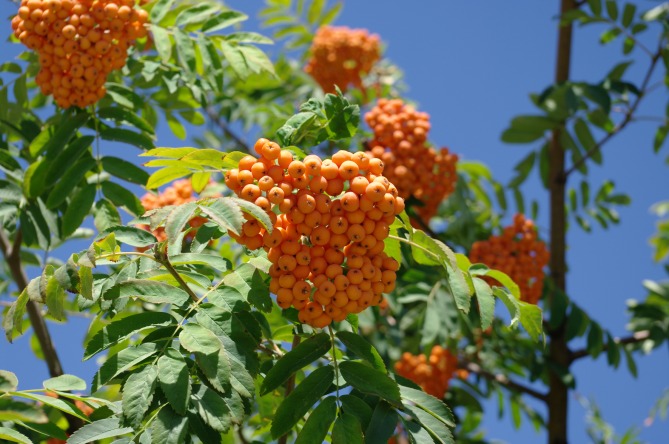The mountain ash, or rowan, is a robust showy tree, a favorite.
The genus Sorbus is our mountain ash, England's rowan tree. Always a favorite, there is just something about a mountain ash. Maybe it's the winter attraction with all those clusters of bright red fruit? The interesting compound pinnate leaves? Or the overall effect? But most people love mountain ash.
Native to North America, there are two mountain ashes that concern us, the showy and the American. Though difficult to differentiate, there are subtle changes in leaf shape, winter buds and flowers. The showy is named for its slightly latger flowers. By far, the American mountain ash is the most popular. With its robust form, chocolate brown colored bark, it is a striking tree.
Sorbus aucuparia, the European mountain ash, is also a good tree, with a lighter, sometimes almost yellow, bark and berries more orange. The European has two cultivars: the Russian, a more upright form and the fastigiata, a columnar form.
All three are good trees.
Mountain ash berries are a pome fruit, meaning that they are very much like little apples. They are highly susceptible to fire blight. Mountain ash have few insect problems, one that is conspicuous are the galls formed by the eriophyid mites. These microscopic insects live inside leaves and the tiny galls that form, little bumps really , are the leaves' reaction to the mites' activities. They are harmless; once inside the leaves there is no treatment. If this and many other insects caused any real harm to the tree it might be worth raising alarm. As is, this is just part of nature.









